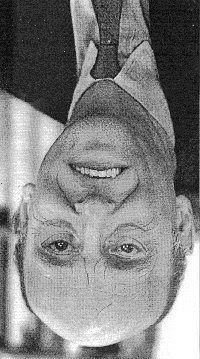Name : Mohandas Karamchand Gandhi
Born : 2 October 1869 Porbandar, Kathiawar Agency, British India
Died : 30 January 1948 (aged 78) ,New Delhi, Union of India
Cause of death : Assassination
Other names : Mahatma Gandhi
Education : University College London
Known for : Indian Independence Movement
Political party : Indian National Congress
Birth and Parents
Gandhi was born on October 2, 1869, at Porbandar. Mohandas or Mohan was youngest of the three sons of Putlibai and Karamchand Gandhi. The latter had been Prime Minister successively in three Kathiawar States. He was straight and true as steel, known for his steadfastness and loyalty. The little house were Gandhi was born is today the "Kirti Mandir".
Early Influences
Putlibai was a traditional Indian woman, devoted to her home and family, deeply religious and austere. These qualities left a deep impression on young Gandhi. Another powerful influence of Gandhi’s early life was seeing King Harishchandra, in the play, suffer for, but finally triumph in, his adherence to Truth. The boy Gandhi aspired to do no less.
Schooling
At school, first the primary at Porbandar, and later the Albert High School, Rajkot, Gandhi showed no particular brilliance, played no games, avoided company. He read little beyond text books, but respected his teacher, though, even at his biding, he would not copy from his neighbour’s answers.
Kasturba and Laxmidas
Marriage with Kasturba, at the age of thirteen, was almost play. But Gandhi began as a jealous and possessive husband; he wanted to make his illiterate wife an ideal one. The other person he was much attached to was his eldest brother Laxmidas. When their father was no more, it was Laxmidas who helped to educate him and sent him to England for legal studies.
In London
Putlibai let Gandhi go abroad only after he vowed to lead a chaste and simple life. For a while Gandhi was tempted to ape English dress and manners. But soon he returned to simplicity. A vegetarian by tradition he soon became one by conviction, joining and working actively for the London Vegetarian Society. He was called to the Bar in June 1891.
The challenge in South Africa
In 1893, Gandhi went to South Africa to handle a case. But though his legal work was soon over, he remained there for 21 years, fighting for Indian rights and defending indentured labour in low courts against discrimination. In this he was assisted by European staff and associates like Polak and Kallenbach.
Ashram Settlement
In founding and running his Ashram settlement at Phoenix and Tolstoy farm, Gandhi was much influenced by Tolstoy and Ruskin towards leading a simple community life. The third of "the moderns" who impressed Gandhi was Raj Chandra, the Jain philosopher and intellectual.
Service in hour of need
Gandhi combined his opposition to wrong with the compassion for the wrong-doer. During the Boer war and the Zulu rebellion he helped the Government at the hour of its need, by raising Indian Ambulance and Stretcher-bearer Corps which served close to the line of fire. Gandhi was awarded medals for this service.
The Indian struggle
The Natal India congress founded by Gandhi in 1894, on lines similar to the Indian National Congress, and later the British Indian committee in the Transvaal fought against restriction on Indian trade, movement and residence. During the campaign against the ‘Black’ Registration Act, Gandhi lit a grand bonfire of thousands of the registration certificates.
The Tolstoy Farm
The Passive Resistance Struggle was to be long-drawn-out. Thousands of satyagrahis suffered imprisonment, loss of property, trade. Tolstoy farm was built by Gandhi on land donated by Kallenbach, as a colony for housing satyagrahis families. They did farming, grew fruit, followed simple crafts and conducted school — all noble experiments in community living.
Gokhale
The Great March: - Gokhale visited south Africa in 1892, and studied the Indian problems first-hand. He met government leaders and securing promise of relief counselled Indian moderation. But government failure to abolish the 5 poll-tax drove them to despair. In November 1913, Gandhi led the ‘Great March’ from Natal into the Transvaal, defying law.
The Martyrs
After Gandhi, Polak and Kallenbach were arrested and jailed. Woman too courted imprisonment. Later the government released them and set up the Solomon commission of inquiry. C. F. Andrews and Person visited South Africa and interceded with the Government. Gandhi attend the unveiling of a memorial for Martyrs like Nagappan and Vilvilliamma.
The Mahatma Leaves
The Indian relief passed, Gandhi decided to return to India. After receiving farewell tributes, the Mahatma left South Africa in July 1914. When in England, enroute home, the great war broke out. Gandhi helped to raise an Indian Volunteer Corps. In December, Gandhi and Kasturba sailed for India.
Voyage home
On the voyage home, Gandhi wondered what was in store for him, he prayed "Lead Kindly Light". Back in India with Kasturba, clad in simple Kathiawadi clothes, Gandhi turned to Gokhale, his "Political Guru", for guidance. He was advised to closed study of scene, while refraining for making political speeches.
Hero’s welcome
The man in South Africa, who had striven valiantly, through satyagraha, for his peoples' honour and human dignity, received a Hero’s welcome everywhere. He traveled widely north and south, mostly by third class of the railways. Visiting Shantiniketan to meet Gurudev—Rabindranath – Tagore – was like going on a pilgrimage.
Honoured by all
In Madras Natesan described Gandhi as the embodiment of godliness and the wisdom of the saint and Kasturba as the incarnation of wifely virtue. In may 1915, Gandhi settled down at Kochrab, near Ahmedabad, where he founded the Satyagraha ashram. Honours came to him-the Kaiser-I-Hind and other medals for his ambulance services in war.
Champaran Satyagraha
Outward trappings meant little to Gandhi. At Banaras he blamed the Princes for their love of finery. At Allahabad he declared material progress of little worth without morality. Gandhi's first satyagraha test in India came in Champaran, Bihar, in 1917 and it led to inquiry into the evil Indigo system and help to end it.
Sabarmati Ashram
When in 1917 plague broke out at Kochrab, Gandhi moved his Ashram to Sabarmati. Hriday Kunj became his abode ; Kasturba lived in a separate Kuti, bound by her husband’s vow of brahmacharya. Close at hand were the grounds where Gandhi gathered Ashram inmates, morning and evening, for prayer.
Satyagraha again
Lokmanya Tilak dominated Indian politics at this time. But, in 1918, Gandhi emerged into National Leadership through satyagraha – for remission of land revenue in famine-stricken Kheda district; also the Ahmedabad Mills-hands’ strike, during which he fasted, lest strikers weaken. At prayer meetings under a tree, he called for discipline and concern for duties, not merely rights.
Bitter Fruit
The end of the great war brought India no freedom, only more repression. Gandhi called for country-wide hartal to protest against the Rowlatt Act Of 1919. In mosques and on beaches he preached Satyagraha; pacified rioters at Bombay and Ahmedabad; but Jallianwala in Punjab was to witness an unprecedented and cold blooded massacre.
Jallianwala Bagh Massacre
People massed in thousands, to protest against Govt. repressive policy, at Jallianwala Bagh. Determined to "Make an example of them", the Government ordered troops to fire on the unarmed crowd. Hundreds died. Martial law and a reign of terror followed. Deeply shocked Gandhi returned his war decorations, decided to non-cooperate with a government that was evil.
Non-cooperation is Born
The Indian National Congress at Calcutta approved of non-cooperation: boycott of law-courts, government educational institutions and foreign goods. Gandhi saw it as the only alternative to violence for redress of the Khilafats and the Punjab wrongs. The founding of Gujarat Vidyapith in November 1920 was a symbol of the national re-awakening.
Swaraj fund-Swadeshi
"Swaraj in one year" was Gandhi’s slogan. Leaders of many shades came together, as at Madras, but few trusted Swaraj could came so quickly. The people rising to Gandhi’s call, raised a 10 million rupee memorial fund for Tilak who died on August 1, 1920. A year later a spectacular bonfire of foreign cloth ushered in the era of Swadeshi.
From Yerawada to Belgaum
1922 saw an eclipse: following violence at Chauri Chaura, Gandhi suspended non-cooperation. Arrested for seditious writings for Young India and tried March 18, he was sentenced to six years, but an operation of appendicitis brought early release from Yerawada Prison. 1924 was to see him once again at the helm at a Belgaum congress.
‘Unity’ Fast
In September 1924, Gandhi imposed on himself a 21 days fast to end Hindu-Muslim tension, an act of religion which taught him to love all equally. It restored peace in the riot-ridden country, brought all leaders together, led to some cleansing of hearts. It resulted in a communal truce.
Deshbandhu’s Death
1925 was a year of calamity: Deshbandhu C. R. Das, Swarajist leader, died in June at Darjeeling where Gandhi had just spent some days with him. It had brought nearer, the Mahatma who preached non-cooperation, and Deshbandhu who gave fight to the Government to the councils. Disconsolate at his death, Gandhi wrote a touching obituary in the glow of the funeral pyre.
On many fronts
1925-28 provided two landmarks of Gandhi’s leadership; Vaikom Satyagraha for giving untouchables use of temple roads, and the founding of All-India Spinner’s Association. For the rest the stage was occupied by Lajpat Rai, martyred during the Simon Commission boycott, hero of the Bardoli Satyagraha, Motilal Nehru, author of the Constitution Report, and Jawaharlal, champion of the "Complete Independence" resolution at the Calcutta congress.
Wheel of Time
And so the Wheel of time turned on. Gandhi’s use of the bicycle- a rare performance in order to be punctual at a meeting – indicated the lengths he was ready to go. And his constant companion, the spinning wheel, remained with him wherever he went, an instrument which spun the destiny of the country and symbolised his identification with the poor.
Salt Satyagraha
1929-30: "The Year of Grace". Gandhi was gathering his forces for onslaught on the citadel of authority. The "Salt Satyagraha" was not merely a protest against taxing the poor man’s diet, or a disobedience of the salt laws. In Gandhi’s eyes it was a "battle of right against might". While the world wondered, the "Dandi March" became the "first shot" in this unique fight.
Dandi March
Small though the chosen band, its 200 mile march to the sea recalled the other "Great March" of 1913 Gandhi had led in South Africa. He had sent viceroy Irwin an "Ultimatum" before embarking on civil disobedience. On "bended knees" he had asked "for bread and received a stone instead". On the night of may 5, 1930, they stole up to him like thieves in the night and arrested him.
Truce and Release
India was afire. Satyagraha, strikes, picketing, boycott of foreign goods and no-tax campaigns were the order of the day. Lakhs were jailed. Thousands suffered loss of limb, hundreds died on lathi charges, firing. Sapru, Jaykar helped to bring about a truce. Gandhi was released on June 25, 1931. While resting in Bombay, he took counsels with his associates, he wanted peace but with honour.
The Nehrus
Drawn into the political struggle, largely under Gandhi's influence, Motilal and Jawaharlal occupied the centre of the stage. At Allahabad they had presided over and addressed meetings attended by leaders like Kripalani, Tandon, Malaviya. When in February 1931, Motilal died, Gandhi felt "Widowed", and said, "What I have lost is loss for ever". Jawaharlal was a rich legacy.
Karachi Mandate
The congress met at Karachi in March, adopted a resolution moved by Jawaharlal and seconded by Badshan Khan endorsing the Gandhi-Irwin Pact. It reaffirmed the goal of "Poorna Swaraj", authorised Gandhi to represent it at the Second Round Table Conference in London. Congress also extolled the bravery of Bhagat Singh and his associates who were martyrs in the country’s struggle for freedom.
Way Clear for R. T. C.
Official implementation of the Gandhi-Irwin Pact was partial. There was repression in the frontier province, tension in U. P. Gandhi stood by the pledge to honour the truce and acquainted Viceroy Willingdon at Simla with official branches. After a second settlement, in August, Gandhi saw the way clear for the R. T. C.; at Bombay the nation bade him speed on August 29.
In Quest of Freedom
Malaviya, Sarojini Naidu, Madhav and Pyarelal- his secretary, Miraben and son Devdas accompanied Gandhi. On board S.S. Rajputana he was in high spirits, chatted with other passengers, made friends and played with children, held prayer meetings, spoke, examined the ship’s instruments, dozed on the sunlit deck, and most of the time plied the spinning wheel.
Friends Every Where
At Suez, port side, Gandhi received Egypt’s greetings, met Indian deputations, talked to journalists. At Marseilles he met European friends, like Deenbandhu C. F. Andrews. Arriving in London on September 12, Gandhi and party proceeded to the East End, the quarter of the poor coal miners and factory hands, lived in their midst at Kingsley Hall, managed by Muriel Lester, his English hostess.
Meeting the people
Scotland Yard had provided two top detectives to guard him, but he needed none. Wherever Mahatma went, children and women, simple folk and sophisticated gentry flocked round him, as when Charles Chaplin, the famous comedian, called. And it is on record that it was Gandhi who made him laugh.
Talking to Leaders
Gandhi met many groups of intellectuals, social workers and students. Addressed many meetings. He visited coal miners cottages, east end children celebrated his birthday with candles and cakes, leaders of all shades of thought-social, political, religious- discussed India with him; for instance, the "Red Dean" of Canterbury, Dr. Hewlett Johnson.
Welcome in Lancashire
Gandhi visited the cotton mills District in Lancashire, hard hit by foreign cloth boycott. Looms were idle, chimneys unsmoking, men unemployed, women miserable. But when he talked to them, explained the plight of India’s peasants, they understood him and even cheered him. And he took time off to attend the Dairy Animal show at Islington and to pat the prize-winning goats.
Futile Quest
And in the midst of all his social calls, Gandhi attended to his main business, the Round Table Conference. He pleaded fervently with the British leaders to give his country freedom, to avoid parting of ways. But they did not listen to him and he left Britain’s shores empty-handed. On the way home at Villeneuve in Switzerland Gandhi met Romain Rolland, the French savant.
Fresh Ordeal
1932: Returning to India, Gandhiji saw Willingdon’s Ordinance raj everywhere: close associates and colleagues were arrested. Soon he himself was taken to Yeravda Prison. In September he fasted against the Communal violence lying under the mango tree. He stirred the Hindu conscience, that led to the Yeravda Pact. On a second fast, in May 1933, for Harijan work, he was released.
From Sabarmati to Segaon
In July 1933, after the solemn last prayer, Gandhi disbanded the Sabarmati Ashram. In September he moved to Satyagraha Ashram at Wardha. Henceforth, the morning walks were on Wardha’s plains. In November, he commenced his country-wide Harijan tour, starting from Nagpur, for rousing the masses to a sense of their duty in regard to the abolition of untouchability.
Tireless pilgrimage
The story of Gandhiji is the story of his tireless pilgrimage throughout the length and breadth of the country for the emancipation of the dumb, downtrodden masses. The tour of 1934 had, for its aim, the upliftment of the "untouchable" whom he called the "Hari Jans" or the children of god.
The Blot of Untouchability
Gandhiji addressed meetings, spoke to people everywhere of the blot of untouchability and the Hindu duty to remove it. When Bihar was devastated by the earthquake in January in 1934, he rushed there to organize relief, but he considered disaster God’s punishment for the sin of the Hindus.
Retirement from Congress
In October 1934, at the Bombay congress he parted company. He differed from congress in the interpretation of the goal: Poorna Swaraj. For his was much more than independence. Means mattered as much as ends. The Congress session paved the way for the setting up the All-India Village Industrious Association.
Constructive work
Village work, Swadeshi claimed most of Gandhiji’s time and attention. Jamnalal Bajaj, J. C. Kumarappa were among those who teamed up with him. He addressed constructive workers from different parts of the country, showed keen interest in such basic things as compost-making, vital for rebuilding the village economy.
Work and Prayer
Harijan upliftment dominated Gandhiji’s mind; he held counsel with trusted social workers such as Thakkar Bapa. At the same time, he combined with thought and deed the act of prayer, leading the tallest of his associates to mass prayers in the Bhangi or Harijan colony. Meanwhile, the Government of India Act of 1935 was on the anvil.
Plague Relief
Relief to the plague-stricken had always a special appeal for Gandhiji whether in South Africa or in India. In 1935, Borsad and other Gujarat Villages suffered an epidemic. With Morarji Desai, Sardar Patel and other trusted lieutenants, Gandhiji toured them, stressed on sanitation, and educated the people in the riddance of rats.
Body of Mind
In his dynamic programme for the reconstruction of rural India, Gandhiji had the support of intellectuals like Nehru and Azad. While, in 1936, he presided over the Literary Conference at Nagpur and extolled the virtues of literature, he lost no opportunity to stress the dignity of labour, setting an example himself.














.jpg)










